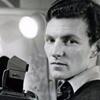Photographer
Professional
Channels and Networks

Thomas Patrick John Anson, 5th Earl of Lichfield was an internationally renowned photographer, in his professional practice known as Patrick Lichfield.
I was given a camera by my mother – it was a very small one – when I was eight. When I was at Harrow, I used to take photographs of school friends as it was the custom to give each other leaving photographs. I discovered that the school shop was selling them at 1/3d (6p) and I could produce them for 9d (4p).
On leaving the Army in 1962, he began to work as a photographer's assistant, and built up his own reputation, partly as a result of having access to the Royal Family.
My parents opposed me becoming a photographer, but I think that was because they thought if I felt strongly enough to go against their wishes, I might have a chance of succeeding at what I did.
I have really worked at being a photographer. I've used pseudonyms to make sure that it is my work and not my name that counts.
My first commission was to photograph Suzanna Leigh who later went on to star with Elvis Presley in one of his films. I took some photographs of her in the park.
His great break was when he was summoned by Diana Vreeland, the doyenne of fashion editors, to photograph the Duke and Duchess of Windsor, and he was given a five year contract with American Vogue.
I went to Paris to meet her... She was sitting alone in a bar. The first thing she said was, 'Who's the best-dressed man in the world?' I said, 'Me'. She said, 'I like that kind of nerve. Who's the second best-dressed man in the world? I said, 'The Duke of Windsor.' She said, 'I want ten 10x8s of him by tomorrow.'
With his trusty Olympus he chronicled swinging London as it swung from the late 60s into the 70s and beyond.
I started in monochrome mainly because I could only afford black and white and then colour got used more in magazines and newspapers. More and more I began to visually think in colour.
He worked for all the major fashion magazines. His pictures were exhibited worldwide and he published several books during a long and successful career.
Remember that the person you are photographing is 50% of the portrait and you are the other 50%. You need the model as much as he or she needs you. If they don’t want to help you, it will be a very dull picture.
He was selected to take the official photographs of the wedding of the Prince and Princess of Wales in 1981, and subsequently became one of the UK's best-known photographers.
From 1999 onwards he was a pioneer of digital photography as a professional standard. In a radio interview on the BBC Radio 2 in October 2004 he said he has not used a roll of film for 4 years and saves 80,000 pounds sterling a year in film.
I am happier taking photos than doing anything else in life. I sometimes wake up in the morning and think, 'This is just another amazing day. I am not doing anything that I don't want to do. It's fantastic. What a life.
In 2002, he was chosen by the Queen and the Duke of Edinburgh to take official pictures of her Golden Jubilee.
My advice to someone wanting to be a photographer... to read as much as he possibly can before leaving school, in something like The Ilford Manual of Photography or any good acknowledged textbook. Read it two or three times as I did until you basically find that you understand what photography is about. Beyond the basic knowledge it is more or less common sense. Then, when you leave school, apply for a job however low it may be in a studio and talk photography, eat photography, sleep photography and meet photographers. If you are an assistant, talk to other assistants. If you are a photographer, talk to other photographers because this is the only way you generate your ideas and stimulate things.
To learn more about Patrick Lichfield click and explore any of his media channels and network links in the tool-bar above.



